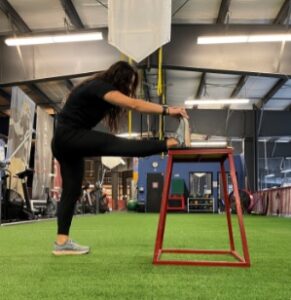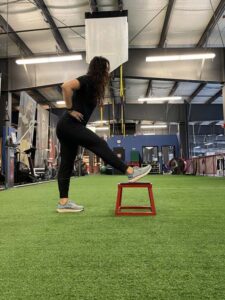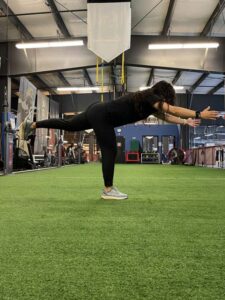The Tightness That Won’t Go Away!
If I had a dollar for every time I heard someone had tight hamstrings, I wouldn’t need to be writing this blog right now. You’ve tried copious amounts of stretching, hammering your hamstrings with a Theragun, and hours of foam rolling, yet your hamstrings still remind you on a daily basis that they’re tight, screaming for some form of relief with every bend you make!
Stretching is beneficial for improving flexibility, decreasing stress, and increasing longevity, and if done consistently, you should see consistent progress made towards your contortion dreams. In order to improve muscle length, and hopefully improve muscle tightness, stretches should be held for 30 seconds at a time, 2-3 sets per muscle group, 5 days per week over a 2-3 week period. If you’re not stretching this long or this consistently, you may not be improving your muscle tightness at all, and therefore, your hamstrings yet again will assume their usual resting length.
Sometimes, the stretches we think we’re doing to improve our hamstring restriction are actually making them more tight! Remember your 3rd grade soccer coach that made you touch your toes a million times to stretch your hamstrings? Those stretches can lead to increasing feelings of tightness along your posterior chain by biasing dural (nerve) stretching instead of hamstring stretching. Our hamstrings start at your pelvis and end just past your knees and yet we crank on our foot to “really feel it.” Technically, pulling up on the toes (which gives us a more intense “hamstring” stretch) is biasing a neural stretch versus a muscular stretch. I’m sure we’ve all looked like me in the past:



Instead of cranking on our hamstrings from our toes or using our lumbar spine to bend, we can in fact lengthen the hamstring from either the knee or from the pelvis. I love the supine hamstring stretch with an emphasis on straightening the knee and lengthening the hamstrings from their attachment point at the knee. The strap is used to support your leg, NOT pull on the foot. In this picture, the foot is in a fairly neutral position and the emphasis is on extending the knee.

Another favorite variation of mine is stretching the hamstrings by focusing on the proper position of the pelvis. . In this picture below, the foot is again in a neutral position, and the emphasis is on hinging at the hips while keeping a neutral spine. This stretch below biases a hamstring stretch from the attachment at the pelvis.

Lastly, our bodies can give us a “tight” feeling because a muscle is weak and in fact not tight because of decreased muscle length. If you’ve tried stretching using the bottom two stretches for the recommended timeframe to stretch and to no avail your hamstrings are STILL tight, they probably need to be strengthened. One of my favorite ways to strengthen the hamstrings in a way that also lengthens them is the standing single leg RDL in this picture. Once you’ve perfected perfect form with your hip hinge, you can begin to add resistance in the form of holding a dumbbell, kettlebell or band to further increase the strength and dynamic flexibility of your hamstrings and glutes.

If you don’t feel comfortable strengthening your hamstrings on your own, come talk with one of our board-certified Sports Physical Therapists here at Elite for some guidance on how to address your pesky hamstrings. For now, happy stretching (and strengthening!)!
If you or a family member could benefit from working with a Physical Therapist or Sports Performance Coach, we’re here to help! Elite offers a full range of services, including Sports Physical Therapy and Sports Performance Training at our facilities in Stoughton and Foxboro! Give us a call or email us to see if we can help!
